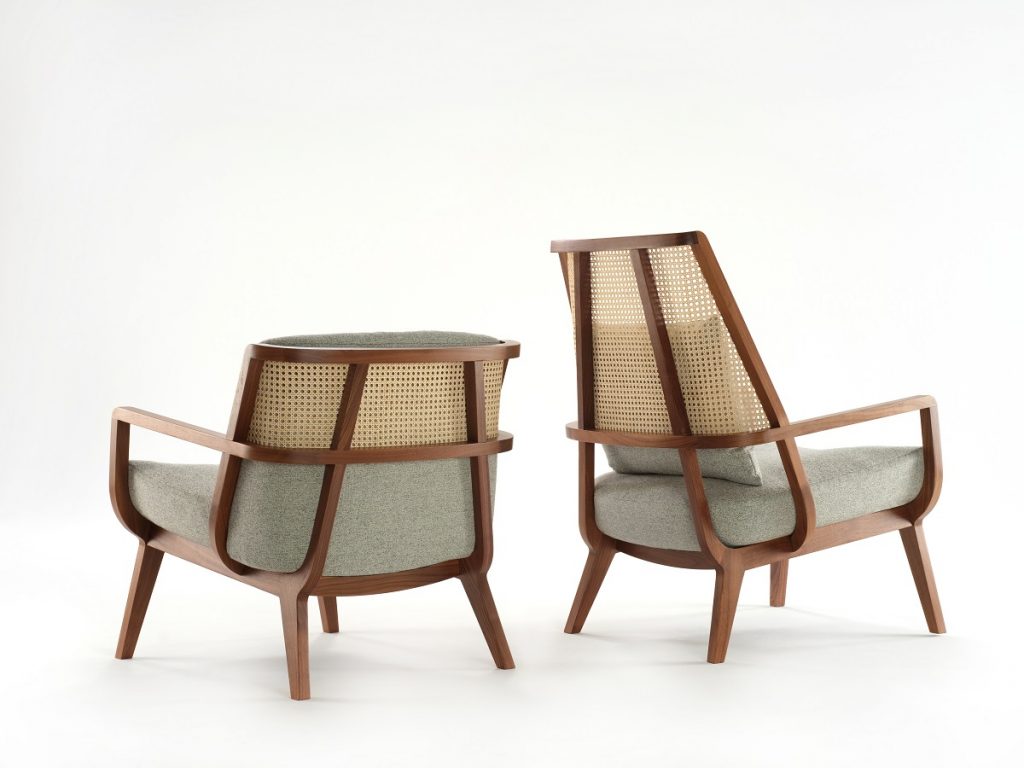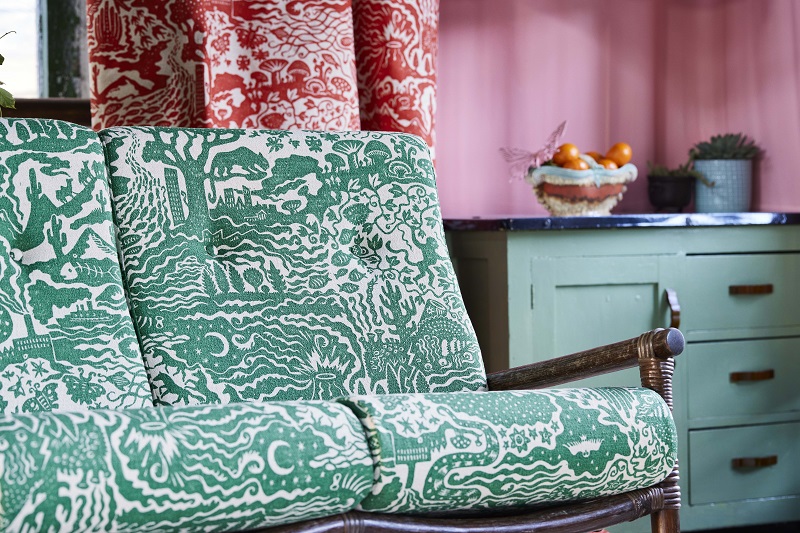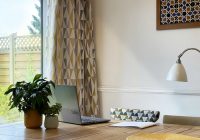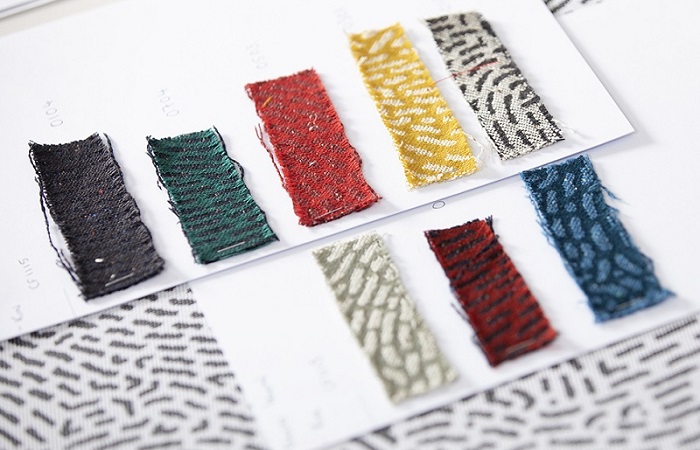
Winner of the 2021 Jonathan Hindle Prize in the 2D Design category, textiles collections Identity and Strata represent the collaborative efforts of designers David Irwin and Bute Fabrics’ Rachel Evison.
For David, who has won three Design Guild Marks for chairs Hardy, Narin and TOR, Identity and Strata signify a first foray into the sphere of fabric design. Working with Rachael – who herself was awarded a Design Guild Mark for the Alchemy Collection, also for Bute, in 2018 – was clearly going to be a recipe for success.
Wishing to find out more about the collections, we caught up with Rachel who was happy to answer our questions.
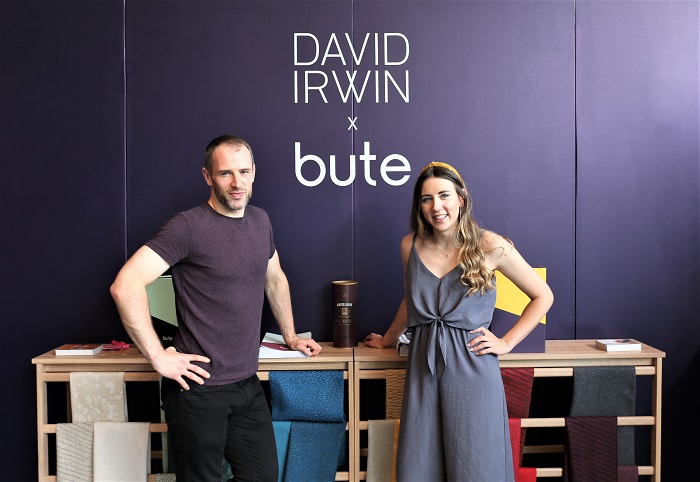
What initially inspired you to design the collections?
The collection was inspired by the island and intricately celebrates the company’s heritage, its location, and its people. Bute pride themselves in their unique story: The mill was founded in 1947 by the 5th Marquess of Bute with the purpose of providing employment opportunities for service people returning home from WWII.
The two new collections: Identity and Strata, are firmly rooted in the elements on which the company are founded: craftsmanship, skill, the island landscape, and the local community where 46 employees reside. This collaboration celebrates the impact of the human touch within machine production, the makers mark, and the mastery of the unique processes inherent in manufacture.
Explain its concept.
The first of two fabrics within the Identity collection, ‘Kin’, celebrates the impact of the human touch within machine production: the makers mark and the mastery of the unique processes inherent in textile manufacture.
The second of the two fabrics within the Identity collection, ‘Clan’ celebrates the unique origin of the company and its founding by the 5th Marques of Bute. The Strata collection, consisting of Mason & Mineral takes its cue from Bute’s underlying geology, celebrating the colours of stone found on the island from its bedrock to its pebbled beaches and rocky shores.
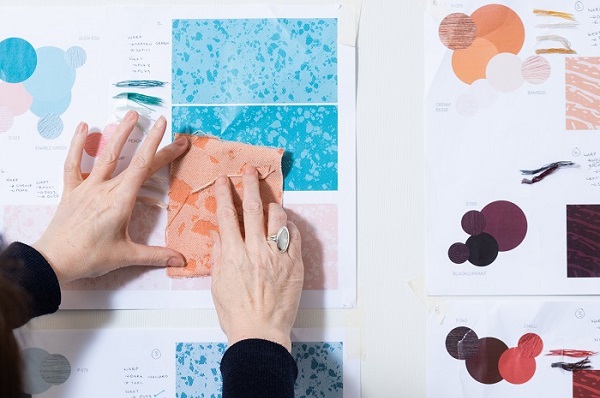
How have you struck the balance between function and design with this product?
The yarns are appropriate for the weaving of an upholstery weight cloth, creating a finished fabric suitable for many applications within the interior environment. After several developments and testing, the yarns were selected from suppliers with a focus on sustainability and are certified as such.
When creating each design, practical aspects of upholstery were considered, from cutting cloth to seam matching. This influenced the pattern styles as well as the finished repeat sizes. The weave structures used ensure the fabrics reach contract performance, whilst retaining the desired look we set out to achieve with the jacquard patterns. The complete set of four compelling fabrics are woven on Bute’s new Jacquard looms – the first production of Jacquard cloth in the mills 72-year history.
Who does this design appeal to?
The main target audience was the contract upholstery market which requires a high-performance specification. The yarns and the finish used for the cloth creates a soft and lustrous handle making the fabrics also suitable for the hospitality market as well as domestic upholstery, drapes and soft furnishings.
How long did the design process take, from initial sketches to roll out?
The initial design meeting took place the end of 2017 with the aim to launch the collection at Clerkenwell in May 2019. This timeframe included developing the four jacquard patterns, then trailing yarn possibilities and colour combinations. All four designs were woven and stocked mid-2019.
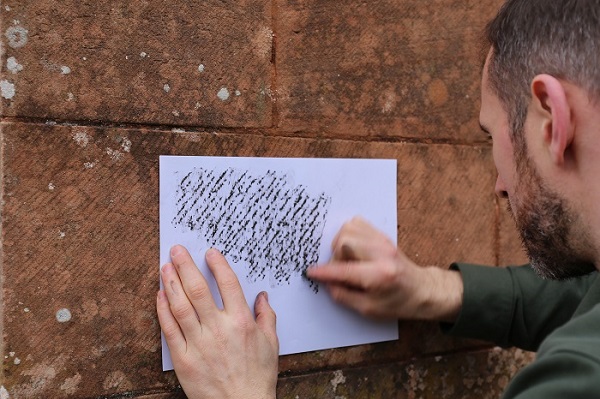
What modifications did you make along the way?
Throughout the development of the four designs, we continuously modified the fabrics to improve the product.
The scale repeat for each of the designs was an area we focus on and modified, as the end usability of the cloth had to be appropriate for high volume furniture manufacturing. The collections use a variety of scale to allow suitability for different sizes of furniture pieces.
To trial the scale of each design we printed CADs of each of the designs to drape over furniture pieces from stools to sofas to work out what looked appropriate.
During the process we focused a lot on weave structures. We did this in order to ensure the cloth had strength and durability as well as allowing the structure to enhance the aesthetic of the design
In what way do you think this design is different from anything else available on the market?
From the outset the aim was to create a collection as unique, as the story of Bute Fabrics; one that was intrinsically linked to the mill, its heritage and the island of Bute itself. The collections soft touch and handle is unique within the contract fabric market as natural and recycled content in high specification cloths rarely achieve this.
What was the most challenging aspect of the design?
The most challenging aspect of the design was the development of the pattern repeat and scale, especially in the design of Kin due to the large complex repeat. The total repeat size is 140cm wide x 160cm high. It took a few months to piece together and blend all the thumbprints taken from each employee at Bute Fabrics to create the final organic seamless design.
For more information, go to https://www.butefabricsltd.com/



